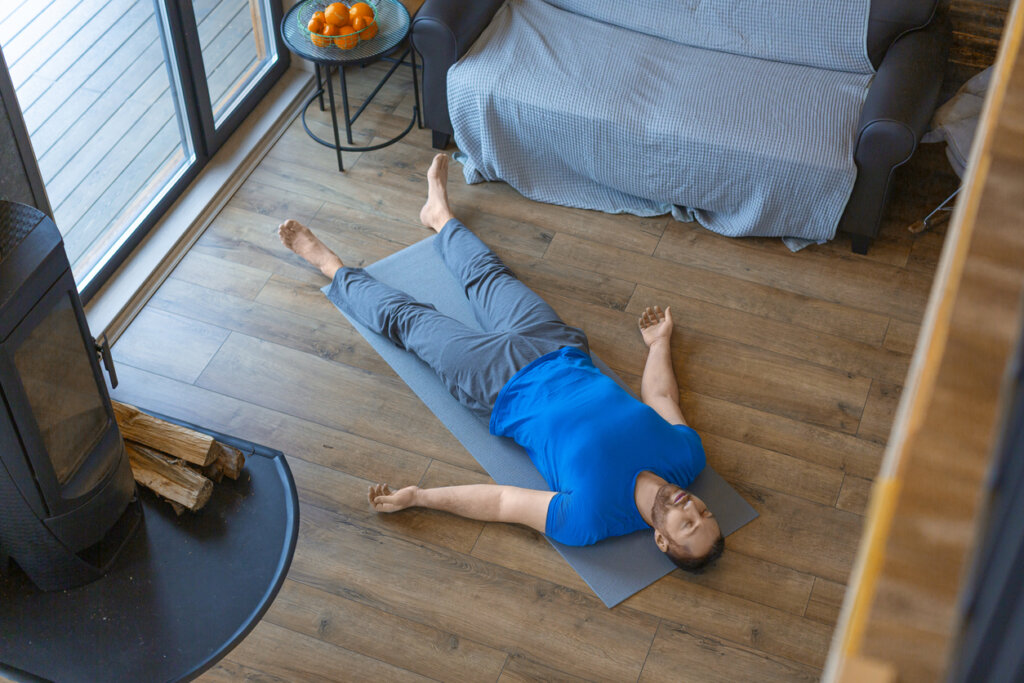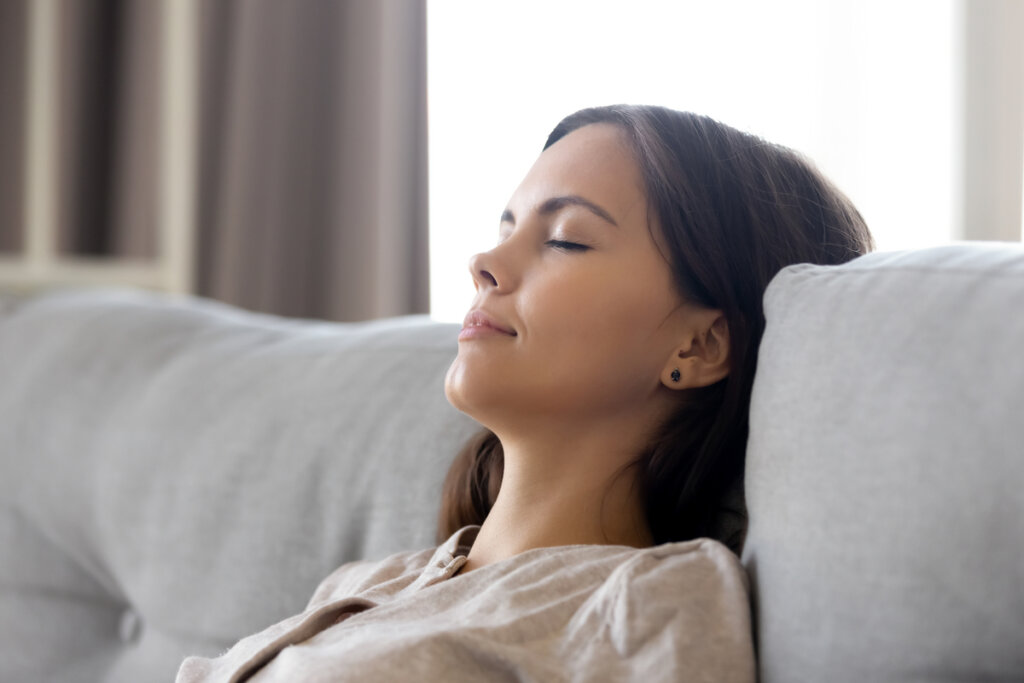Wolpe's Relaxation Technique

Wolpe’s relaxation technique is a tool to manage stress and all its effects. It was created by Joseph Wolpe in 1958. His inspiration was born from the observation of the fear response in cats. In fact, after a decade of these studies, he finally came to shape this technique.
Wolpe’s relaxation technique is an adaptation of another technique devised by Edmund Jacobson in the 1930s. However, the latter had the drawback of being extremely long and arduous. In fact, it could take between 50 and 100 sessions, each lasting from between one to nine hours. Wolpe tied in his feline findings with Jacobson’s method in order to make it more accessible.
The result was Wolpe’s relaxation technique which could be considered as a revision of Jacobson’s. Nevertheless, unlike the latter, Wolpe’s technique is completed in six sessions of 20 minutes each, with two daily sessions. Let’s take a closer look.
“Tension is who you think you should be. Relaxation is who you are.”
-Chinese proverb-

Wolpe’s relaxation technique
One of the great advantages of Wolpe’s relaxation technique is that it can be done at home and doesn’t require any special equipment. All you need is some training in order to understand how it works, and a quiet place to practice it. The rest simply involves paying attention and concentrating.
In essence, this technique is based on tensing and relaxing the muscles. It’s carried out in three stages, as you’ll see below.
Stage 1: Tension and relaxation
This stage is the most important in the Wolpe relaxation technique. It basically comprises three steps:
- Focus attention on a specific muscle group.
- Tense this muscle group for a period of five seconds.
- Slowly relax the same group for 20 to 30 seconds.
Altogether, this stage should last between 15 and 20 minutes. The muscle groups are worked in the following order:
- Chest and abdomen.
- Feet and lower leg. Includes fingers, ankles, and calves.
- Upper legs. Includes thighs and buttocks.
- Hand and forearm. Don’t forget the wrists.
- Right arm. The entire muscle is tensed, up to the shoulder.
- Left arm. The same as the right.
- Shrug each shoulder toward the ear and turn your head toward your shoulder. Your shoulder and your ear should touch last.
- Jaw. Grit your teeth taking care not to damage them until your jaw is really tense.
- Purse your lips as if you were going to whistle.
- Chin. Place your tongue against your palate and push up.
- Relax.
Stage 2: Verification
This consists of reviewing all the muscle groups and verifying if they’re relaxed or still show tension. If they’re still tense, repeat the previous exercise, but only in the area of tension. It’s worth remembering that it’s difficult to achieve total relaxation in the first few sessions.
Stage 3: Relaxation of body and mind
By the end, your body should feel lighter, as if it weighs less. Unlike some meditation techniques, your mind shouldn’t necessarily go blank. You’ll still have thoughts. However, if you’ve carried out the practice well, they won’t be distressing or worrying.

The benefits of the Wolpe relaxation technique
You should practice this method for six days in a row, doing two sessions per day. This particularly applies if you’re experiencing pronounced tension or stress. From then on, you should do it periodically, once every two months.
This technique has been shown to be effective in improving sleep quality. Obviously, rest is essential to reduce states of stress or anguish. As a matter of fact, not only does it combat insomnia, it also helps you maintain deeper, uninterrupted sleep.
The method also helps reduce tension migraines. Likewise, it relieves pain in your neck and shoulders, which is often the result of a great deal of muscle tension.
Overall, the Wolpe relaxation technique relieves anxiety. For this reason, it should be conducted in moments of pressure when anxiety can take over, such as a job interview.
Wolpe’s relaxation technique is a tool to manage stress and all its effects. It was created by Joseph Wolpe in 1958. His inspiration was born from the observation of the fear response in cats. In fact, after a decade of these studies, he finally came to shape this technique.
Wolpe’s relaxation technique is an adaptation of another technique devised by Edmund Jacobson in the 1930s. However, the latter had the drawback of being extremely long and arduous. In fact, it could take between 50 and 100 sessions, each lasting from between one to nine hours. Wolpe tied in his feline findings with Jacobson’s method in order to make it more accessible.
The result was Wolpe’s relaxation technique which could be considered as a revision of Jacobson’s. Nevertheless, unlike the latter, Wolpe’s technique is completed in six sessions of 20 minutes each, with two daily sessions. Let’s take a closer look.
“Tension is who you think you should be. Relaxation is who you are.”
-Chinese proverb-

Wolpe’s relaxation technique
One of the great advantages of Wolpe’s relaxation technique is that it can be done at home and doesn’t require any special equipment. All you need is some training in order to understand how it works, and a quiet place to practice it. The rest simply involves paying attention and concentrating.
In essence, this technique is based on tensing and relaxing the muscles. It’s carried out in three stages, as you’ll see below.
Stage 1: Tension and relaxation
This stage is the most important in the Wolpe relaxation technique. It basically comprises three steps:
- Focus attention on a specific muscle group.
- Tense this muscle group for a period of five seconds.
- Slowly relax the same group for 20 to 30 seconds.
Altogether, this stage should last between 15 and 20 minutes. The muscle groups are worked in the following order:
- Chest and abdomen.
- Feet and lower leg. Includes fingers, ankles, and calves.
- Upper legs. Includes thighs and buttocks.
- Hand and forearm. Don’t forget the wrists.
- Right arm. The entire muscle is tensed, up to the shoulder.
- Left arm. The same as the right.
- Shrug each shoulder toward the ear and turn your head toward your shoulder. Your shoulder and your ear should touch last.
- Jaw. Grit your teeth taking care not to damage them until your jaw is really tense.
- Purse your lips as if you were going to whistle.
- Chin. Place your tongue against your palate and push up.
- Relax.
Stage 2: Verification
This consists of reviewing all the muscle groups and verifying if they’re relaxed or still show tension. If they’re still tense, repeat the previous exercise, but only in the area of tension. It’s worth remembering that it’s difficult to achieve total relaxation in the first few sessions.
Stage 3: Relaxation of body and mind
By the end, your body should feel lighter, as if it weighs less. Unlike some meditation techniques, your mind shouldn’t necessarily go blank. You’ll still have thoughts. However, if you’ve carried out the practice well, they won’t be distressing or worrying.

The benefits of the Wolpe relaxation technique
You should practice this method for six days in a row, doing two sessions per day. This particularly applies if you’re experiencing pronounced tension or stress. From then on, you should do it periodically, once every two months.
This technique has been shown to be effective in improving sleep quality. Obviously, rest is essential to reduce states of stress or anguish. As a matter of fact, not only does it combat insomnia, it also helps you maintain deeper, uninterrupted sleep.
The method also helps reduce tension migraines. Likewise, it relieves pain in your neck and shoulders, which is often the result of a great deal of muscle tension.
Overall, the Wolpe relaxation technique relieves anxiety. For this reason, it should be conducted in moments of pressure when anxiety can take over, such as a job interview.
All cited sources were thoroughly reviewed by our team to ensure their quality, reliability, currency, and validity. The bibliography of this article was considered reliable and of academic or scientific accuracy.
- Blanco, C., Estupiñá, F. J., Labrador, F. J., Fernández-Arias, I., Bernardo-de-Quirós, M., & Gómez, L. (2014). Uso de técnicas de relajación en una clínica de psicología. Anales de Psicología/Annals of Psychology, 30(2), 403-411.
- Martínez, G. S. (1998). Joseph Wolpe (1915-1997). Revista Latinoamericana de Psicología, 30(1), 165-167.
- Monserrat, O. N. (2010). Desensibilización Sistemática y su aplicación para reducir la Ansiedad.
This text is provided for informational purposes only and does not replace consultation with a professional. If in doubt, consult your specialist.







